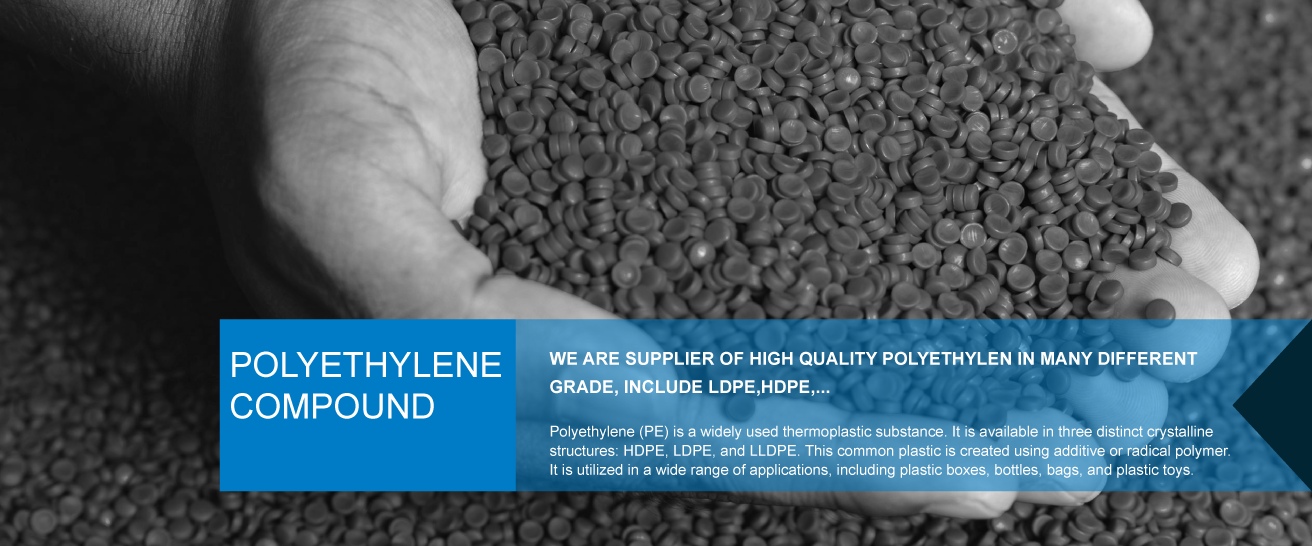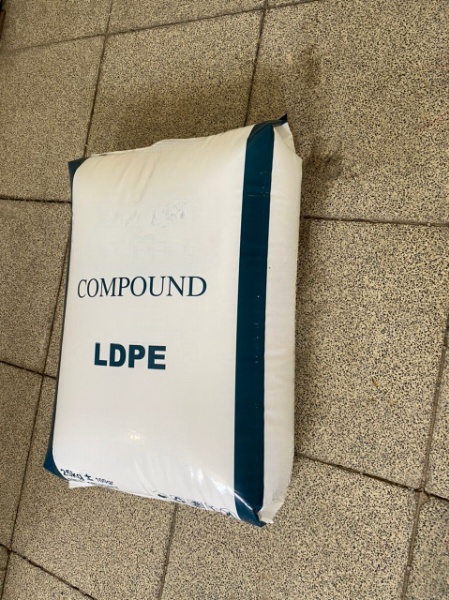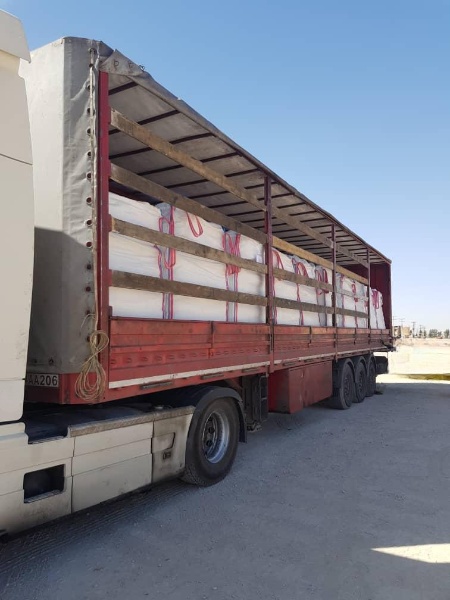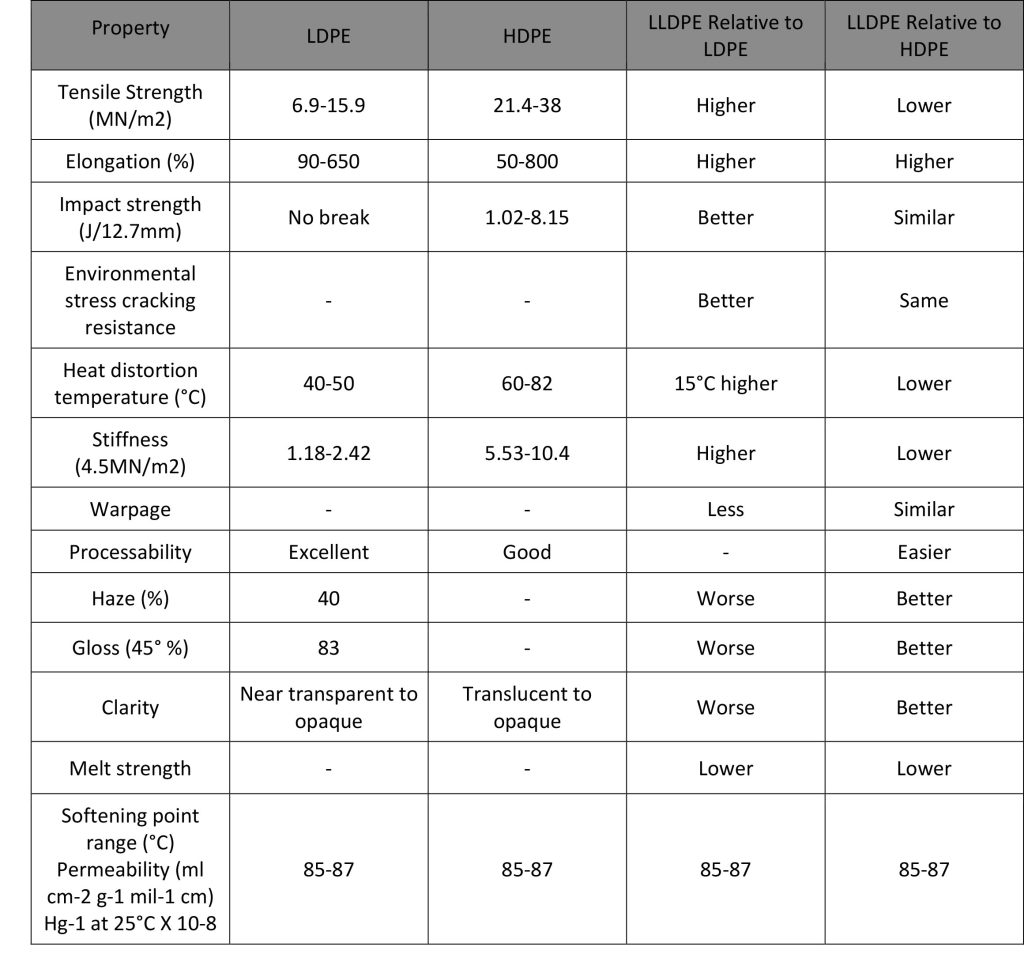
Polyethylene with a low density (LDPE)
Low-density polyethylene (LDPE) is a semi-rigid copolymer with a high crystallinity (50-60%). It has a greater degree of brief & medium side-chain branching than HDPE. LDPE is made up of 4,000-40,000 carbon molecules and has several short branches.
There are two primary procedures for producing low-density polyethylene: stirred autoclave and tubular approaches. Because of its greater ethylene conversions, the cylindrical reactor has surpassed the autoclave approach.
Look for LDPE material if you require greater flexibility but less strength. To select the right product, consult this extensive list of commercial grades »
- Low-Density Polyethylene (LDPE) Properties 105 to 115°C melting point
- LDPE density: 0.910-0.940 g/cm3
- LDPE chemical resistance:
- Tolerance to alcohols, dilute alkalis, and acids is high.
- Aliphatic and aromatic compounds, oil products, oxidizing agents, and halogenated hydrocarbons have little resilience.
- Heat resistance of up to 80°C indefinitely and 95°C for shorter periods.
- Polymer with minimal price and outstanding process ability
- Good weatherability and high impact strength at low temperatures
- Outstanding electrical insulating characteristics
- FDA approved with very minimal water absorption
LDPE’s disadvantages
The presence of greater branching in the polymer chain reduces the performance of LDPE. Examples include:
- Stress cracking is possible.
- Maximum service temperature, stiffness, and strength are all low. This restricts its use in applications demanding high temperatures.
- High gas permeability, especially for carbon dioxide
- Inadequate UV resistance
- Extremely flammable
- Welding and joining at high frequencies are not conceivable
To address these issues, numerous LDPE grades with enhanced features like as UV stability, high strength, antiblockage, and so on have been created.


Low-Density Polyethylene Applications (LDPE)
Low-Density Polyethylene (LDPE) is primarily used in the production of containers, dispensing bottles, wash bottles, tubing, plastic bags for computer components, and different molded laboratory equipment. Plastic bags are the most common application for low-density polyethylene.
- Packaging – Because of its cheap cost and high flexibility, LDPE is widely used in the packaging sector for pharmaceuticals and squeeze bottles, caps and closes, counterfeit evident, liners, trash bags, sheets for food products (frozen, dry items, etc.), laminations, and other applications.
- Low-Density Pipes and Fittings Because of its flexibility and minimal water retention, polyethylene is utilized to create water pipes and hoses for the pipes and fittings business.
- Consumer products – housewares, flexible toys, agricultural films – wire & cables – sub-conductor insulators, cable jacketing
LLDPE is made by polymerizing ethylene (or ethane monomer) with 1-butene and lesser quantities of 1-hexene and 1-octene with Ziegler-Natta or metallocene catalysts. It has a similar structure to LDPE. The LLDPE structure consists of a linear backbone with short, homogeneous branches (unlike longer branches of LDPE). When these small branches elongate, they may move against each other without becoming entangled, unlike LPDE.
Because of the qualities listed below, linear low-density polyethylene (LLDPE) has proven fairly effective in replacing Low Density Polyethylene in the current context.
LLDPE Properties:
- Higher intensity strength and flexibility
- Translucent and milky in hue
- Excellent for both mild and powerful buffers, with high chemical resistance.
- Water vapor and alcohol barrier characteristics are excellent.
LLDPE has a wide range of applications, including general-purpose film, stretch film, textile packaging, agriculture film, and so on.
While LLDPE may compete with HDPE and LDPE in a range of applications, the chart below can help you narrow down your options among the three PE kinds.
| Property | LDPE | HDPE | LLDPE Relative to LDPE | LLDPE Relative to HDPE |
| Tensile Strength (MN/m2) | 6.9-15.9 | 21.4-38 | Higher | Lower |
| Elongation (%) | 90-650 | 50-800 | Higher | Higher |
| Impact strength (J/12.7mm) | No break | 1.02-8.15 | Better | Similar |
| Environmental stress cracking resistance | – | – | Better | Same |
| Heat distortion temperature (°C) | 40-50 | 60-82 | 15°C higher | Lower |
| Stiffness (4.5MN/m2) | 1.18-2.42 | 5.53-10.4 | Higher | Lower |
| Warpage | – | – | Less | Similar |
| Processability | Excellent | Good | – | Easier |
| Haze (%) | 40 | – | Worse | Better |
| Gloss (45° %) | 83 | – | Worse | Better |
| Clarity | Near transparent to opaque | Translucent to opaque | Worse | Better |
| Melt strength | – | – | Lower | Lower |
| Softening point range (°C) Permeability (ml cm-2 g-1 mil-1 cm) Hg-1 at 25°C X 10-8 | 85-87 | 85-87 | 85-87 | 85-87 |
Low-Density Polyethylene Applications (LDPE)
Low-Density Polyethylene (LDPE) is primarily used in the production of containers, dispensing bottles, wash bottles, tubing, plastic bags for computer components, and different molded laboratory equipment. Plastic bags are the most common application for low-density polyethylene.
- Packaging – Because of its cheap cost and high flexibility, LDPE is widely used in the packaging sector for pharmaceuticals and squeeze bottles, caps and closes, counterfeit evident, liners, trash bags, sheets for food products (frozen, dry items, etc.), laminations, and other applications.
- Low-Density Pipes and Fittings Because of its flexibility and minimal water retention, polyethylene is utilized to create water pipes and hoses for the pipes and fittings business.
- Consumer products – housewares, flexible toys, agricultural films – wire & cables – sub-conductor insulators, cable jacketing
LLDPE is made by polymerizing ethylene (or ethane monomer) with 1-butene and lesser quantities of 1-hexene and 1-octene with Ziegler-Natta or metallocene catalysts. It has a similar structure to LDPE. The LLDPE structure consists of a linear backbone with short, homogeneous branches (unlike longer branches of LDPE). When these small branches elongate, they may move against each other without becoming entangled, unlike LPDE.
Because of the qualities listed below, linear low-density polyethylene (LLDPE) has proven fairly effective in replacing Low Density Polyethylene in the current context.
LLDPE Properties:
- Higher intensity strength and flexibility
- Translucent and milky in hue
- Excellent for both mild and powerful buffers, with high chemical resistance.
- Water vapor and alcohol barrier characteristics are excellent.
LLDPE has a wide range of applications, including general-purpose film, stretch film, textile packaging, agriculture film, and so on.
While LLDPE may compete with HDPE and LDPE in a range of applications, the chart below can help you narrow down your options among the three PE kinds.

